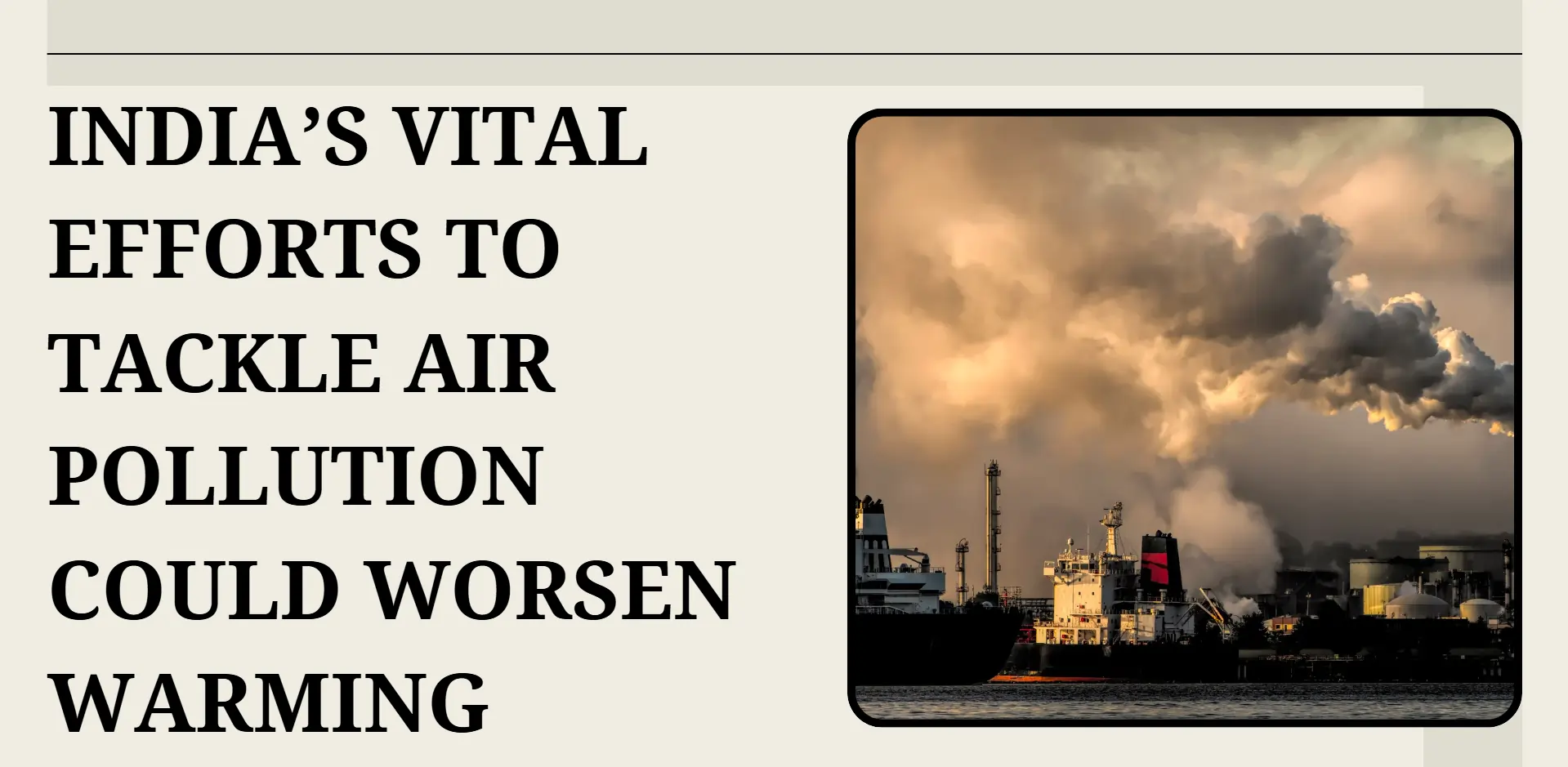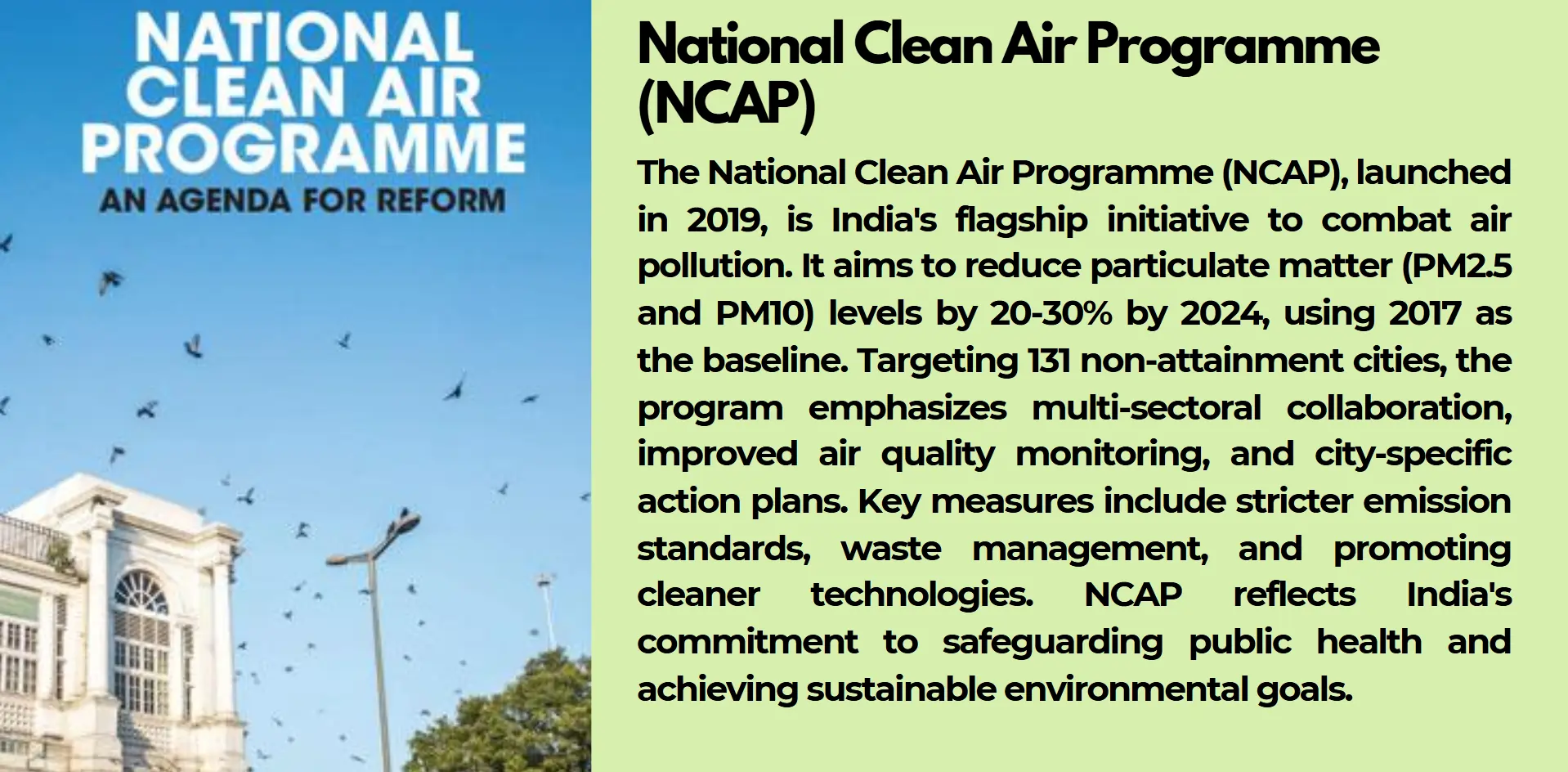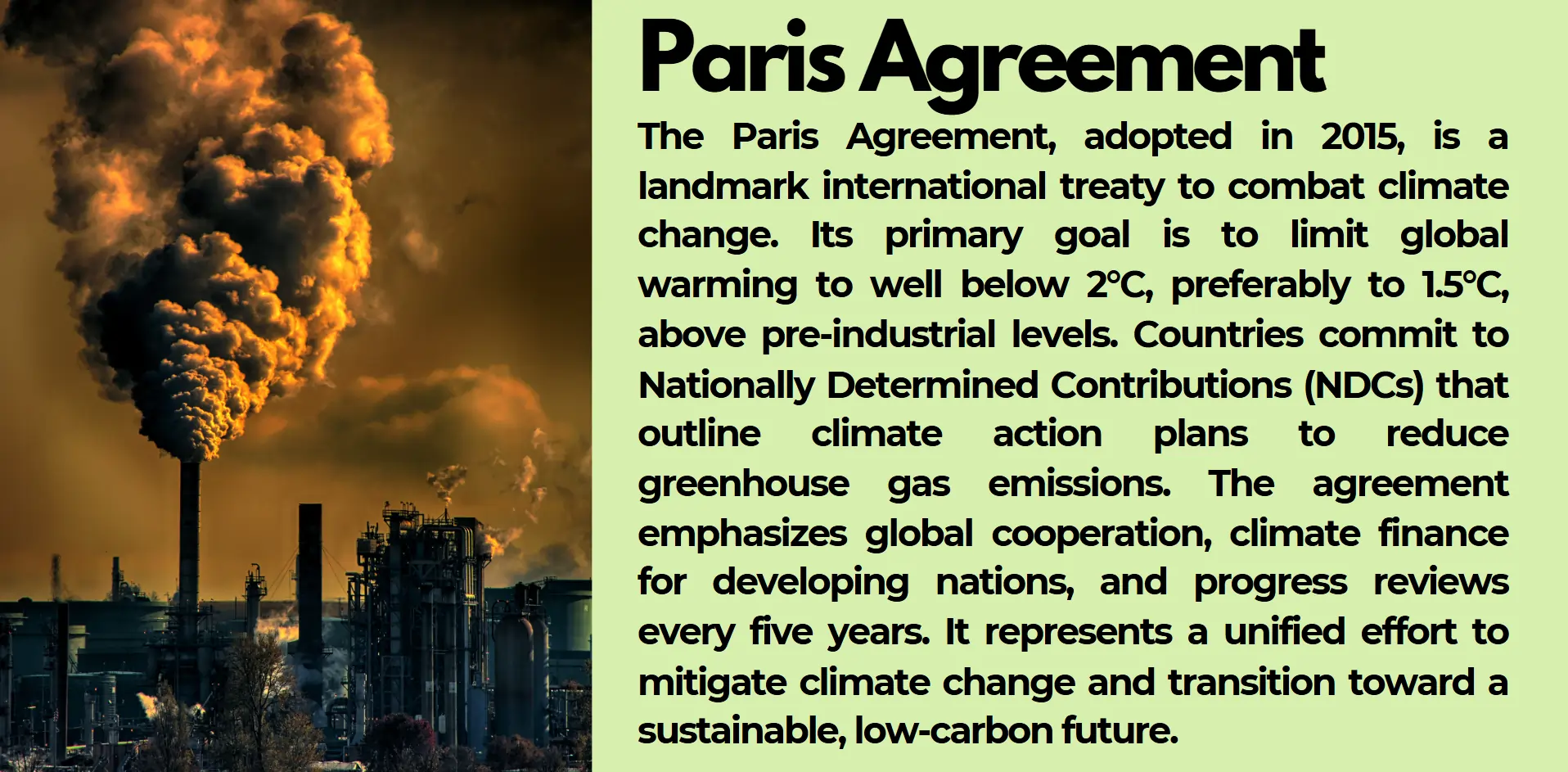The aerosol particles within the atmosphere produce cooling by scattering sunlight while simultaneously causing health problems to humans.

India confronts a substantial struggle to fight its air pollution problems that endanger public well-being and financial security. The country demonstrates its dedication to clean air through programs like National Clean Air Programme and renewable energy incentives and sustainable agricultural methods. The elimination of particulate matter and aerosols through pollution reduction measures creates an unexpected trade-off because these actions may increase global temperature rise. India must achieve a proper balance between its air pollution reduction initiatives and climate target fulfilment because the situation demands clear understanding. This article aims at studying environmentally detrimental side effects that well-meaning measures might produce together with practical solutions for avoiding these outcomes.
Understanding India's Air Pollution
The problems of contaminated air rank as a major environmental and public health emergency throughout India during this time period. The fast pace of industrialization and urbanization along with growing population in India creates an enormous challenge for improving air quality. Various factors contribute to air pollution across India because the environmental challenge exists at many different levels of interaction.
Urban areas experience severe air quality deterioration because of pollution emanating from vehicles. The combination of excessive vehicles operating with out-dated models in high-density traffic leads to dangerous emissions of NOx, CO, PM2.5 and PM10 particulates. The problem is worsened by diesel engines because their pollutant emissions exceed those of petrol engines.
The air receives most of its pollution from industrial manufacturing operations. Industries, particularly those in the manufacturing and energy sectors, emit large quantities of sulphur dioxide (SO2), heavy metals, and other toxic gases. The primary utility of coal-fired power plants in India generates atmospheric pollutants together with greenhouse gases thus worsening pollution levels. Industrial pollution becomes more severe because weak and insufficient emission standard enforcement exists in multiple areas.
The practice of burning leftover crop stubble throughout the agricultural season in Punjab and Haryana state creates severe pollution problems. Farmers traditionally use field clearing operations by burning agricultural residue as a cost-saving measure but the resulting smoke contains ragged particles and multiple pollutants in high quantities. These natural atmospheric conditions result in worsened air quality situations that affect different regions during winter months specifically when pollution accumulates close to the surface.
Rural areas utilize biomass together with solid fuels to cook food extensively making the situation more difficult to address. Many million households throughout the country use wood along with cow manure and agricultural waste for cooking purposes which sends dangerous pollutants, black carbon and volatile organic compounds into the atmosphere.
Millions of people throughout India experience harsh respiratory issues, cardiovascular problems and reduced lifespans because of air pollution. An economic catastrophe exists due to the combination of escalating healthcare expenses and decreased work productivity.
The reduction of India's air pollution demands a full-scale solution which involves delivering advanced technologies while implementing strict regulatory enforcement alongside initiatives to spread public awareness about pollution. The nation must address the issue holistically because this approach remains the only method to defend the people and environment from dangerous air pollutants.
India's Policies and Initiatives
India has made important progress toward clean air through a combination of various policy approaches intended for air quality enhancement and public health protection. India demonstrates its strong dedication to fighting its main environmental crisis through these active interventions.
The National Clean Air Programme (NCAP) started in 2019 as a major national initiative. NCAP functions as a detailed framework with the objective of lowering PM2.5 and PM10 levels by 20 to 30 percent. The national program operates in 122 identified non-attainment areas by uniting multiple economic sectors to manage waste resources and enforce vehicle pollution regulations and industrial pollution regulations to produce cleaner air.

India prioritizes cleaner renewable energy as its fundamental approach to fight against pollution. Indian government targets solar power and wind energy at high levels to decrease fossil fuel usage which in turn prevents coal-fired power plant emissions. The National Solar Mission implements plans that foster solar energy installation growth throughout India.
In 2020 India introduced its Bharat Stage VI (BS-VI) emission standards which established national practices at a level similar to global strictness norms. The Faster Adoption and Manufacturing of Electric Vehicles (FAME) scheme provides subsidies to boost EV adoption while efforts are made to establish electric vehicle infrastructure throughout the country.
Reduction of agricultural residue burning remains a top priority for the government since burning causes major seasonal contamination of the air. Sustainable farming programs alongside mechanized technology through happy seeders operate as solutions to minimize the pollution problem.
Various strategies implemented by India confirm a comprehensive method for dealing with air pollution. The country shows strong determination to create a healthier future through these current measures despite on-going air pollution issues.
The Paradox: Tackling Air Pollution vs. Worsening Warming
India deals with air pollution through strategies that produce an unexpected effect by potentially intensifying global warming rather than reducing it. The climate system develops this intricate relationship because air pollution particles known as aerosols play a special role within Earth's system.
Air pollution contains aerosols as small airborne particles which stay suspended in atmospheric spaces. The potentially hazardous particles in the atmosphere generate surprise climate cooling benefits for the Earth. The Earth's surface receives less heat because aerosols reflect sunrays into outer space. The cooling effects of aerosols have made it harder to identify the complete magnitude of climate warming produced by carbon dioxide (CO2) and methane along with other greenhouse gases.
Public health improvement requires India to continue its aggressive anti-air pollution measures which combine particulate matter regulations with clean technology promotions. The decrease in aerosol concentrations produces transparency in Earth's atmosphere which enables high levels of sunlight to penetrate the surface. The reduction of aerosols reveals the full strength of greenhouse gas atmospheric warming thus exposing the baseline effects of climate change.
Such paradox occurs because we maintain fossil fuel consumption while releasing persistent greenhouse gases from various activities. The decline in short-lived aerosols enhances air quality but greenhouse gas emissions persist so the climate warming trend continues with possibly increased speed.
Solving this crisis demands a dual strategy which unites measures for air quality management with actions to fight climate change. Indian policy making should focus on implementing simultaneous measures to decrease aerosols and greenhouse gas emissions at the national level. Groups of carbon-neutral energy solutions combined with tree planting operations together with advanced technologies help reduce climate change effects while cleaning the air. The effective solution to this challenge will emerge through unified air pollution and climate change strategies which India must implement to create sustainable protection for human health as well as environmental well-being.
The Global Context
As a worldwide phenomenon air pollution together with its climate effects constitutes global challenges that affect all nations in their attempt to resolve air quality problems along with reducing climate change impacts. The situation in Indian air pollution control demonstrates global patterns showing that air pollution reduction strategies disclose the complete scope of greenhouse gas warming effects.
The country of China executed strong air pollution controls even though their regulatory efforts worsened overall warming patterns. China achieved better air quality through strict pollution control measures yet discovered the greenhouse gas consequences which affect global heat levels. European and North American areas solved smog and particulate pollution during the late twentieth century but showed warming effects became more visible when aerosol pollutants decreased.
The particular position of India aggravates its challenges since it develops rapidly while requiring substantial energy supplies. India plays a major role as a significant greenhouse gas emitting nation because it needs to meet its responsibilities to global climate initiatives particularly the Paris Agreement commitments. The nation requires a balanced approach between air quality improvement and climate change objectives because it must perform effectively as a leading global actor according to the Paris Agreement while securing better breathing conditions for its residents.
Every challenge related to interconnected issues requires worldwide joint efforts. Countries that engage deeply in cooperative clean energy development alongside technological exchanges will successfully solve the contradiction between atmospheric contamination and world climate changes. Indian efforts toward sustainable energy and practice integration may provide useful examples to developing countries addressing similar environmental challenges.

The worldwide scenario makes it imperative to develop integrated planning which addresses air contamination problems while respecting climate responsibility. Through international collaboration and novel solutions nations will achieve sustainable objectives that aim to create a cooling environment and cleaner conditions.
Potential Solutions and Recommendations
India needs to implement integrated solutions that maintain present health needs together with future climate objectives to resolve on-going air pollution challenges. Potential solutions must aim to decrease aerosols and greenhouse gas emissions simultaneously as they work toward developing sustainable and advanced Sectoral practices.
Integrating Air Pollution and Climate Policies
At present India maintains two separate policies that deal with air quality improvement tasks independently from climate-focused measures. Unified policies that connect these two areas will improve synergies because they will allow particulate matter reduction efforts to also target carbon dioxide and other greenhouse gas emissions. The development of multi-sector collaboration needs priority from policymakers to reach complete results.
Transition to Carbon-Neutral Energy Sources
Departing from fossil fuels represents an urgent absolute necessity for power generation. The present projects for National Solar Mission together with wind power expansion need additional development. The existing energy programs will lead the energy sector toward higher sustainability through green hydrogen technologies and bioenergy solutions.
Enhancing Urban and Rural Infrastructure
Energy conservation depends on developing efficient electric vehicles stations while installing modern transport systems through effective network development. FAME should improve and expand its established program framework to enhance the uptake of electric vehicles in the market. A dual approach of rural LPG subsidies with clean cooking stove distribution will reduce the use of biomass while decreasing air pollution emissions.
Sustainable Agriculture Practices
A genuine solution to agricultural residue burning must be established to achieve any reduction in seasonal air pollution. Financial support to growers combined with automatic seeders functions as a resourceful prevention method against farmers who would otherwise conduct destructive stubble burning. The integration of agroforestry and diverse cropping schemes helps farmers reduce their reliance on harmful monoculture farming methods hence solving their residue management issues.
Reforestation and Carbon Sequestration
The growth of forest reforestation areas during technology implementation helps eliminate emissions while maintaining environmental balance. Successful running of the Green India Mission depends crucially on incorporating the whole community because intensified commitment delivers sustainable outcomes.
International Collaboration
Through international collaboration India obtains sophisticated means to establish better pollution control infrastructure as well as cutting-edge solutions to mitigate climate change. The Clean Energy Ministerial combined with knowledge-sharing programs will empower India to achieve successful implementation of cohesive solutions.
Conclusion
India faces an urgent need to fully control its air pollution because it directly enhances environmental quality and public health standards. Unexpected temperature patterns resulting from aerosol decrease necessitate well-designed integrated solutions. The solution to this complicated problem requires India to combine its air quality programs with climate initiatives that use renewable technology along with sustainable practices together with advanced system deployments. Achieving clean air requirements needs multiple nations cooperating to combat climate change outcomes. Strategies to address climate action together with air pollution management will build resilient sustainable paths that protect human beings and the planet.